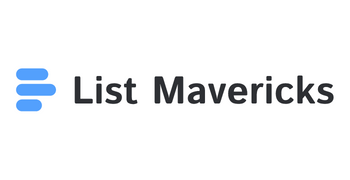Every company that wants to reach new customers needs a way to share its message with the world. An outbound marketing manager is responsible for creating and managing campaigns that send a company’s message directly to potential clients through email, social media, phone calls, and other channels. Companies rely on these managers to help them generate leads and grow sales.
This role requires a mix of creativity, planning, and data analysis. Outbound marketing managers design marketing programs, oversee projects, and measure what is working. They also work with different teams and often use new tools and digital platforms to get better results. People looking for new job opportunities in this field can find several openings on platforms like Indeed and LinkedIn.
Key Takeaways
- Outbound marketing managers lead campaigns that reach new customers.
- They use a mix of planning, teamwork, and digital tools for results.
- Demand for these roles remains steady across many industries.
Role of an Outbound Marketing Manager

An outbound marketing manager leads a company’s efforts to reach new customers and increase sales through outreach and targeted campaigns. This person must combine strategic planning, management skills, and strong communication to drive results.
Key Responsibilities
An outbound marketing manager is responsible for developing and executing campaigns to attract potential customers. These campaigns often include cold emails, phone outreach, direct mail, and social media messaging.
They track the performance of each campaign, making adjustments to improve results. Regular tasks also include collaborating with the sales team, coordinating with content creators, and monitoring the competition.
Another important job is overseeing the outreach tools and technologies, ensuring the team uses the best methods available. The outbound marketing manager sets clear goals and manages budgets to ensure campaigns are effective and cost-efficient. For more information on day-to-day duties, review this detailed job description outline.
Job Description
The job description typically highlights planning and leading outbound strategies that boost awareness and generate leads. The outbound marketing manager creates detailed plans and briefs for each campaign and tracks key performance indicators, like response rates and sales conversions.
They supervise marketing staff and provide training as needed. Coaching and guiding the team on best practices is a routine part of the role. This position also requires excellent project management to meet all deadlines.
Managers in this role are also expected to identify trends by researching markets and competitors, then implement new tactics to improve performance. Companies often expect the manager to communicate results and updates to senior leadership. More examples of specific tasks can be found on job listing sites.
Essential Skills
Strong communication skills are a must, as the manager works with various teams and contacts outside the company. Attention to detail is critical, since small errors in messaging or lists can reduce campaign success.
Leadership is needed to train and motivate the team, handle conflicts, and ensure everyone is focused on shared goals. Analytical skills are important for interpreting campaign data and making changes to tactics.
Technical skills in customer relationship management (CRM) tools, email platforms, and digital outreach tools are valuable. Time management and the ability to multitask are also key marketing manager skills for this fast-paced job.
Qualifications and Certifications
Most companies require at least a bachelor’s degree in marketing, business, or a related field. Some roles prefer a master’s degree or an MBA.
Certifications such as the HubSpot Marketing Certification, Google Analytics Certification, or similar credentials can help a candidate stand out. These show expertise and a commitment to ongoing learning.
Experience matters. Employers usually expect several years in a marketing manager or outbound marketing role. A proven track record of successful campaigns is important. Continuing education and staying up to date with the latest marketing trends is also valued. For a list of required education and typical salary ranges, sites like Indeed offer helpful details.
Core Outbound Marketing Strategies

Outbound marketing focuses on directly reaching out to potential customers using proven, targeted methods. By using the right marketing processes and tools, companies can boost brand awareness, generate quality leads, and improve ROI in a structured way.
Lead Generation Techniques
Lead generation is at the heart of any outbound marketing strategy. Outbound marketing managers usually combine several techniques to identify and attract the right audience. These include attending trade shows, leveraging third-party data sources, running targeted ad campaigns, and using social media outreach.
A strong lead generation process requires clear audience segmentation and personalization. This approach helps deliver messages that matter to potential clients. Tools such as CRM systems and automated prospecting platforms help manage large volumes of leads and track their engagement through the sales funnel.
Measuring the success of lead generation efforts is key. Marketers often track conversion rates, cost per lead, and lead quality to determine which techniques deliver the best ROI. When combined, these strategies give outbound marketing teams the best chance to find and engage new clients. For further reading, you can see strategies and tips in the Ultimate Outbound Marketing Guide.
Email Campaigns
Email campaigns are a mainstay in outbound marketing because they allow direct and personalized communication with leads. A well-executed campaign starts with building a targeted list and segmenting that list by interests, industry, or behavior.
Effective outbound email campaigns use a clear, simple message tailored to each segment. Marketers often include a strong subject line and call to action to increase open and response rates. Personalization and follow-up are key to boosting engagement.
Many marketing tools now offer automation so managers can schedule and manage campaigns efficiently. Performance metrics, such as open rates, click-through rates, and response rates, help marketers fine-tune messaging for higher effectiveness. For more details, take a look at Mailchimp’s outbound marketing strategies.
Outbound Calls
Outbound calls, often part of broader marketing campaigns, put a human face to outreach efforts. These calls may be cold calls to new prospects or follow-up calls to warm leads. The main goal is to create a meaningful conversation and qualify leads for the sales team.
Preparation is crucial. Outbound marketing managers often use scripts that focus on the problems their service or product solves. This keeps the conversation relevant and engaging. CRM software allows tracking call outcomes and follow-up tasks to ensure no opportunity is missed.
Measuring call performance helps improve the process and training. Key indicators include call volume, connection rates, and conversion rates. To learn more about these strategies, see Salesforce’s guide to outbound marketing.
Project and Performance Management

Outbound Marketing Managers are responsible for guiding marketing initiatives from start to finish while making sure goals are met. These managers use clear methods to plan projects and track how well activities are performing to achieve quality results.
Project Management Methods
Outbound Marketing Managers often use project management software and frameworks to organize campaigns. Common tools include Asana, Trello, and Microsoft Project. These help teams break big projects into smaller steps, assign tasks, set deadlines, and monitor progress.
Managers rely on regular check-ins and timelines to keep marketing initiatives on track. Agile and Waterfall are frequently used methods. Agile works well when projects need to adjust quickly, while Waterfall makes sense when each stage must be finished before moving on.
Collaboration is important. Outbound managers schedule meetings to talk about updates and challenges. Strong communication between team members leads to faster problem-solving. Using templates and process checklists also supports quality and consistency in campaign delivery.
Performance Metrics
Performance metrics track how well outbound marketing projects are working. These metrics help managers see if campaigns are reaching the right audience and creating results. Metrics often include the number of leads generated, email open rates, and click-through rates.
It is key to also look at conversion rates—how many people take action after seeing marketing content. Cost per lead, cost per acquisition, and return on investment (ROI) are necessary numbers to watch.
Visual dashboards can show daily or weekly updates on these metrics. This data allows managers to find problems and make smart changes quickly. Good metrics provide a clear picture of whether marketing goals are being met and where processes need to improve.
Key Performance Indicators
Key Performance Indicators, or KPIs, are specific numbers chosen to check the success of each marketing initiative. For example, a manager might track total sales from a campaign, customer retention rate, or the quality score of leads.
Common KPIs in outbound marketing include response rates, appointment setting rates, and campaign reach. Managers compare current KPIs to past results and industry standards to find strengths and weaknesses.
KPIs are often set at the start of a project. Targets should be measurable and connected to business goals. Tracking KPIs helps teams stay focused and proves the value of outbound marketing to stakeholders. For more information on KPIs used in these roles, visit the Outbound Marketing Manager job description outline.
Leveraging Technology and Digital Channels

Outbound marketing managers today rely on digital tools to reach more leads, track performance, and improve campaign effectiveness. Using a mix of software and platforms helps teams make data-driven decisions and maximize their results.
CRM and Marketing Automation
Customer Relationship Management (CRM) systems, such as Salesforce or HubSpot, help outbound marketing managers organize lead data, track communication, and maintain detailed contact records. This ensures that every sales and marketing effort is well-documented and directed to the right audience.
Marketing automation tools support tasks like email campaigns, follow-ups, and lead nurturing. Automated workflows save time, reduce errors, and keep engagement steady across multiple channels. Managers can also measure how contacts interact with campaigns through click tracking, open rates, and more.
By using CRM and marketing automation together, teams can segment their audiences, personalize messaging, and schedule activity based on customer behavior. Integrating analytics platforms like Google Analytics or built-in reports allows marketers to see which messages are performing best and make adjustments quickly.
Digital Advertising
Digital advertising lets outbound marketing managers target specific audiences across search engines, websites, and social media. Popular platforms for digital ads include Google Ads, Meta (Facebook and Instagram), and LinkedIn. These channels offer several targeting options, such as age, location, job title, or interests.
Programmatic ad buying uses automated systems to purchase ad space in real time. This approach increases efficiency and ensures the right ads are shown to the right people. Outbound marketing managers can monitor the results using detailed dashboards that report clicks, impressions, and conversions.
Retargeting is another valuable strategy. Managers can show ads to people who have visited their website but did not convert, which can increase the chances of bringing them back to take action.
Social Media Integration
Outbound marketing managers use social media to connect with potential leads, build awareness, and promote offers. Integration with CRM systems enables sales and marketing teams to monitor interactions, track engagement, and respond quickly to comments or messages.
Scheduling tools help teams plan and send content across multiple platforms, such as Meta, LinkedIn, and Twitter. Consistency is key to staying visible. Paid social ads can amplify company messages to larger, targeted audiences.
Social listening features allow tracking of brand mentions, competitor activity, and trending topics. This information helps managers adjust outbound messaging and capture opportunities as they arise, keeping campaigns timely and relevant.
Collaboration, Trends, and Career Development

Outbound marketing managers need to build strong relationships with teams, stay on top of changing trends, and grow their careers. They often bridge the gap between sales, creative staff, and managers to deliver better customer experiences and reach business goals.
Working with Marketing Teams
An outbound marketing manager works closely with other roles like the marketing specialist, content creators, PR staff, and inbound marketing teams. Clear and regular communication helps avoid confusion and increases positive energy in the group. Managers organize team meetings, share updates, and give feedback.
It is important to align outbound campaigns with the company’s customer experience strategy. Collaboration means making sure every member understands their role and how the campaign fits into the bigger marketing budget. Many outbound manager job descriptions now highlight teamwork and a good cultural fit as key skills.
Joint projects often include brainstorming, planning content, and analyzing marketing performance. Outbound managers might use marketing tools or supply chain management software to keep projects on track. Good teamwork makes reaching sales and marketing goals much more achievable.
Staying Current with Industry Trends
Following the latest industry trends is essential for any outbound marketing manager. Trends include improvements in data analysis, new outreach channels, and closer collaboration between sales and marketing. Keeping up helps managers spot growing tactics early and make better campaign decisions.
Emerging trends in 2024 and 2025 include AI-driven targeting, more personalized communication, and lean marketing strategies. More managers are working with both inbound and outbound teams to ensure their messages reach the right audience, as highlighted by the latest outbound marketing trends.
Managers read marketing journals, attend webinars, join industry groups, and sometimes network with MIT-trained experts in PR and digital strategy. Being aware of market shifts means changing outreach methods and content creation quickly, helping their company stay ahead.
Pathways to Marketing Director
A career as an outbound marketing manager can lead to more senior jobs, such as marketing director. Most directors have practical experience in multiple parts of marketing, including campaign planning, budgeting, and performance tracking. Many start as marketing specialists, later moving into management roles by taking on more responsibility over time.
Common pathways include:
- Starting as a marketing specialist or coordinator
- Earning experience in inbound and outbound marketing
- Learning about supply chain management and customer behavior
- Moving up to outbound manager or team lead
- Applying for senior roles such as marketing director
Managers often take extra training, seek feedback, and network with others to improve their fit for top roles. Job postings regularly list leadership skills, understanding of industry trends, and success with budgets as must-have traits for promotion.
Professional Development
Continuous learning is vital for outbound managers who want to keep skills fresh and advance in their careers. Many take short courses, attend conferences, or earn marketing and PR certifications. Others join professional groups or work with a mentor.
Hands-on experience is just as important as classroom learning. Leading new projects, taking on supply chain management tasks, or managing the marketing budget helps sharpen decision-making. Professional development activities can include:
- Completing training on new outreach tools
- Practicing lean marketing methods
- Attending industry events
These efforts help an outbound marketing manager meet the changing needs of the field and get ready for future roles in senior management or as a marketing director. For more on required experience, visit this job description outline.
Frequently Asked Questions

Outbound marketing managers are responsible for planning strategies, guiding teams, and handling data with care. Their work covers many skills and faces changes as technology and privacy rules evolve.
What are the primary responsibilities of an outbound marketing manager?
An outbound marketing manager develops and leads marketing campaigns that reach out to potential customers. They design and launch outbound calls, emails, ads, or events to generate leads and increase sales. Coordination with the sales team, managing budgets, and tracking campaign results are also key tasks. More details on main duties can be found in this overview of outbound marketing manager roles.
What skills are essential for a successful career in outbound marketing management?
They need strong communication skills for both writing and speaking. Analytical thinking helps them read data and adjust strategies when needed. Time management and problem-solving are also important. Technology skills, including CRM tools and digital advertising platforms, are often needed for success in the role.
How does an outbound marketing manager measure campaign effectiveness?
Common ways to measure success include tracking the number of leads generated, response rates, conversions to sales, and return on investment (ROI). They often use software to create reports and monitor key metrics, adjusting their strategies as the data comes in to improve results.
What are the challenges faced by outbound marketing managers today?
Staying noticed in crowded markets is tough. They must adapt to changing advertising rules and privacy laws, manage rising costs, and handle customer reluctance to traditional outreach. Digital noise and competition from inbound methods also present significant challenges. Read more about these challenges in this comprehensive outbound marketing guide.
Can you describe a successful outbound marketing strategy you’ve implemented?
A strong outbound plan might use targeted emails sent to a well-researched audience. Follow-up calls and personalized offers can boost response rates. Mixing digital ads with phone and email outreach often brings better results. Examples of effective outbound campaigns are discussed in this ultimate outbound marketing guide.
How do outbound marketing managers stay compliant with data protection and privacy laws?
To follow laws such as GDPR or CAN-SPAM, managers must get customer consent before sending marketing messages. They regularly review privacy regulations, train their teams, and use tools that help with compliance. Removing outdated or unapproved contacts from their lists is part of their ongoing process.

